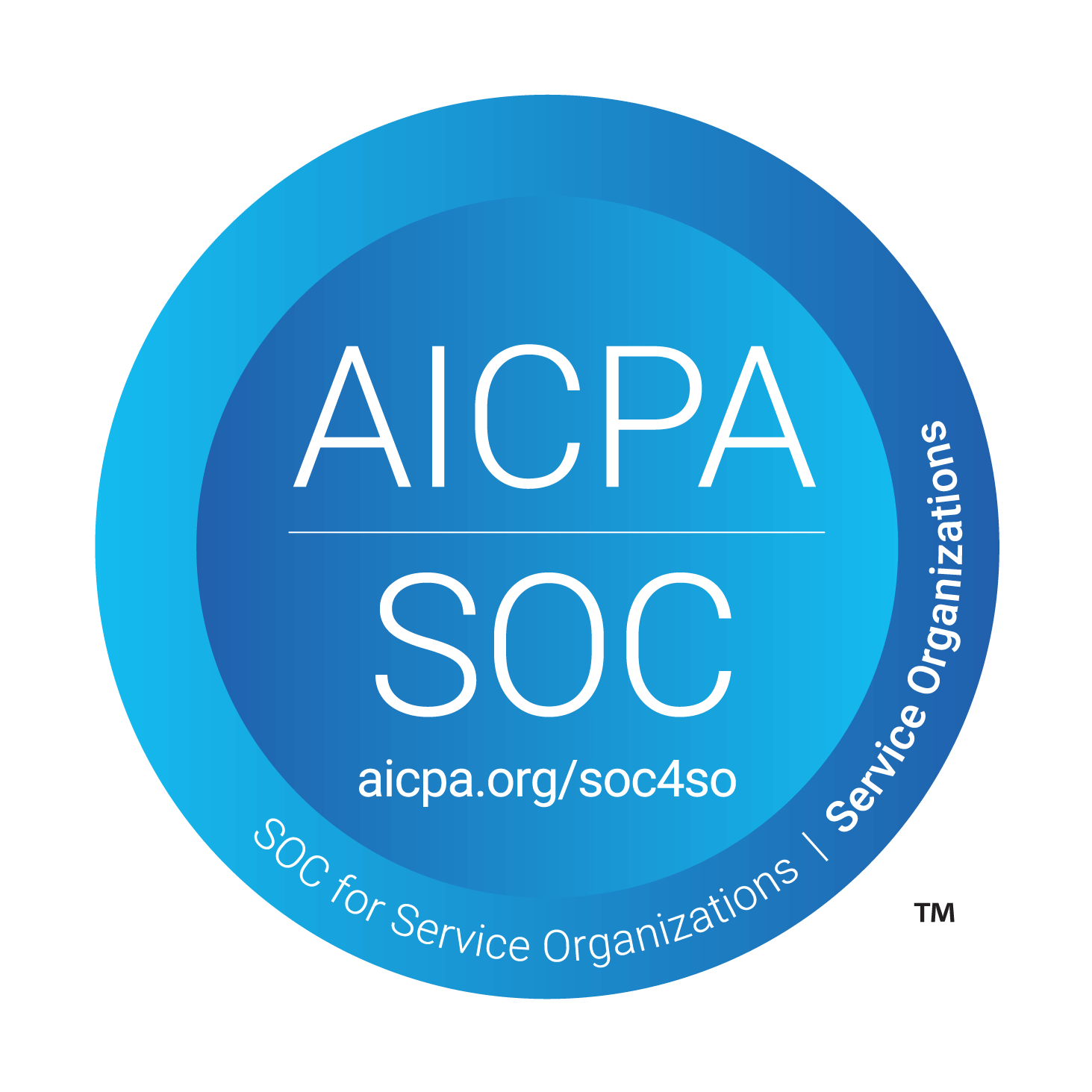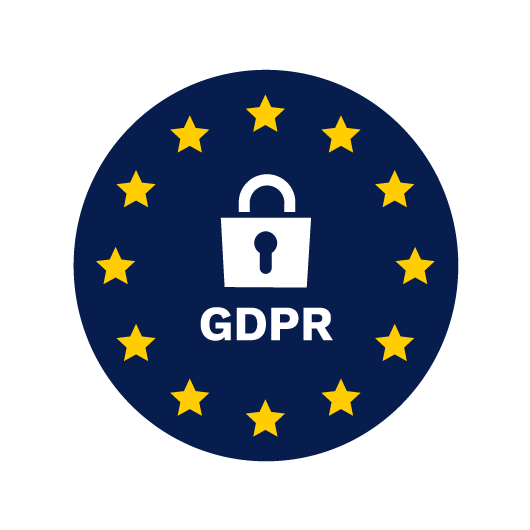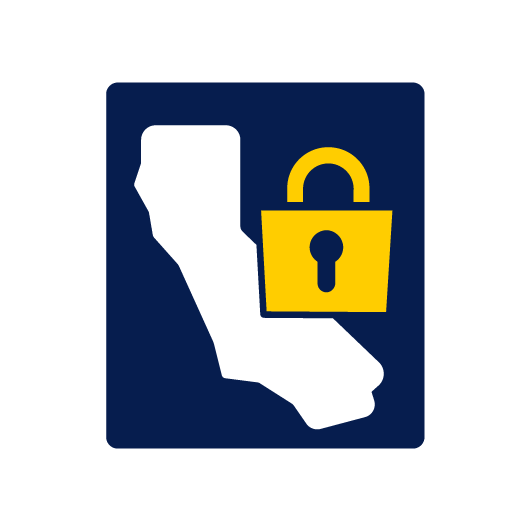Fire Safety Inspection Checklist
Failing to acknowledge or eliminate fire hazards can put inventory, the property, and lives in jeopardy. To prevent this, a fire safety inspection should be conducted on a regular basis that makes sense for your type of business. An easy-to-use checklist can help identify problem areas, streamlining the inspection process and leaving proof of action for regulators and auditors.
You can click on the button bellow to start a free trial of Forms On Fire and get instant access to our checklist database that includes a fire safety checklist template.
Let's see what is fire safety inspection, which items should be included on a fire safety inspection checklist, and how to build one that matches your business needs and industry and state regulations.
What is a Fire Safety Inspection?
Generally speaking, a fire safety inspection assesses a property’s fire hazards and preventative measures. Its purpose is to discover where and how fires can start in a building and identify ways to prevent them. The inspection can examine whether sprinklers and smoke detectors are functioning properly, fire extinguishers are charged or otherwise current, cords and wires are in good condition, and all flammable substances are stored securely. Fire safety inspections may also confirm compliance with fire codes and regulations.
These inspections may be conducted by a fire department employee, an insurance adjuster, or one of the building’s stakeholders. For example, if you’re a store manager, you may conduct a fire safety inspection to confirm that the building is safe for people to work and shop in.
Why is a Fire Safety Checklist Necessary?
A fire safety inspection checklist is key for helping an inspector move methodically through each important area of the inspection. A rushed or cursory inspection that doesn’t properly identify hazards can put lives at risk, but a checklist prompts the inspector to thoroughly review each aspect. It also helps property owners and managers by identifying areas of concern and providing the opportunity to remove the hazards and put preventative and emergency action plans in place.
Furthermore, having a signed, completed checklist is important if there is a fire-related incident. It proves that the inspection happened and whether measures were taken to address any identified issues.
What Does a Fire Safety Checklist Cover?
A fire safety inspection checklist may include questions such as:
- Are “No Smoking” signs posted where required?
- Are “No Smoking” regulations observed?
- Are flammable liquids safely stored in approved containers away from combustibles?
- Is trash/rubbish removed on a regular basis?
- Are all electrical plugs, switches, and cords legal and in good repair?
- Are all cords run safely and not across doorways or under carpets or mats?
- Are heat-producing appliances well-ventilated?
- Has malfunctioning electrical equipment been immediately reported or taken out of service?
- Are areas kept as clean and neat as possible?
- Are materials stacked so as not to tip or fall?
- Are corridors and doorways kept free and clear of obstructions?
- Is there adequate lighting in corridors, exits, and stairways?
- Do all exit signs illuminate as required?
- Are evacuation routes adequately posted?
- Are all evacuation signs present and in good condition?
- Are fire doors accessible, closed, and unobstructed?
- Are stairwells free of obstacles, storage items, or debris?
- Are corridors and exits unobstructed?
- Are fire detection and alarm systems tested regularly?
- Are fire sprinkler connections and shut-off valves visible and accessible?
- Are fire sprinkler heads clean and unobstructed?
- Is there an adequate clearance of 1 meter for all fire extinguishers and hoses?
- Is fire equipment in the proper location and undamaged?
- Have all occupants been instructed on the evacuation plan?
The checklist should also include the following information about the person who performed and approved the inspection, as well as the inspection itself:
- Date Created
- Reference Number
- User Details
- User Signature
- Company
- Client
- Project
- Area
- General Comments
Note that fire safety inspection requirements may vary, so fire safety inspection checklists will differ as well. Checklists should include questions that prompt compliance with state fire codes, ordinances, and standards. They should also be tailored to suit the nature of the business.
Bellow is a snapshot of a fire safety inspection checklist built with Forms on Fire.
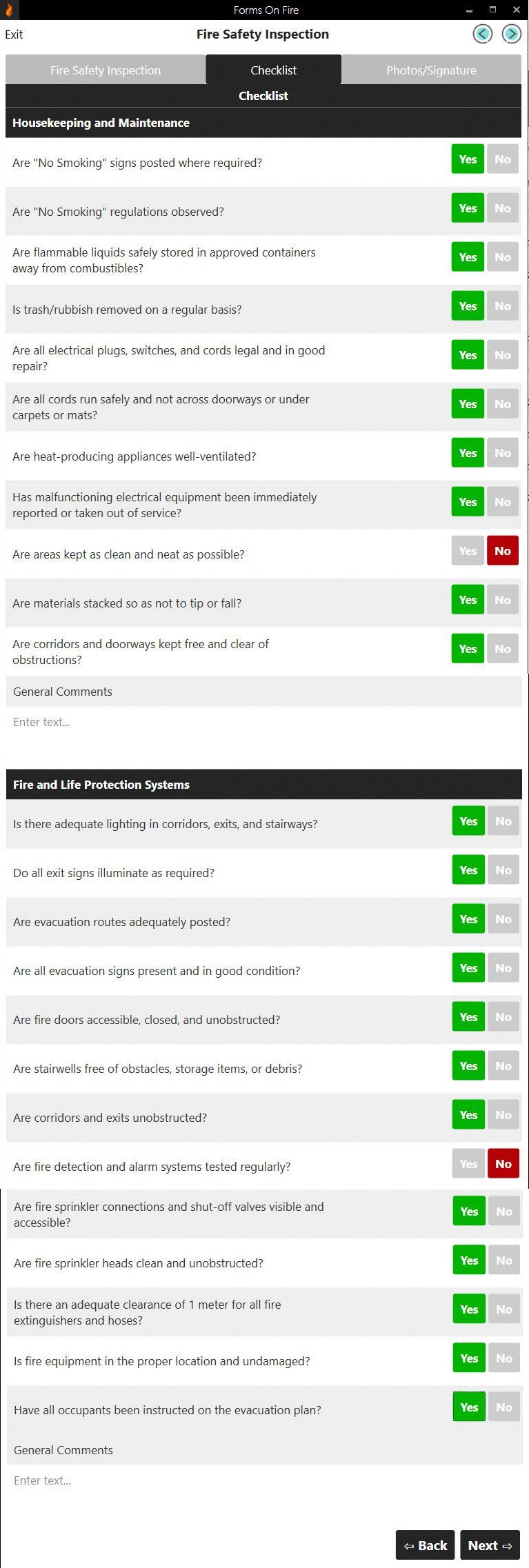
What is a Fire Safety Report?
A fire safety inspection report is a PDF file of a digitally completed checklist. Admins can view these completed checklists each time they’re completed. These reports prove valuable if there’s a question or incident, as they can indicate the inspector's name, the date of the inspection, and if various fire safety precautions were met.
Here is an example of a report based on the checklist we showed above.
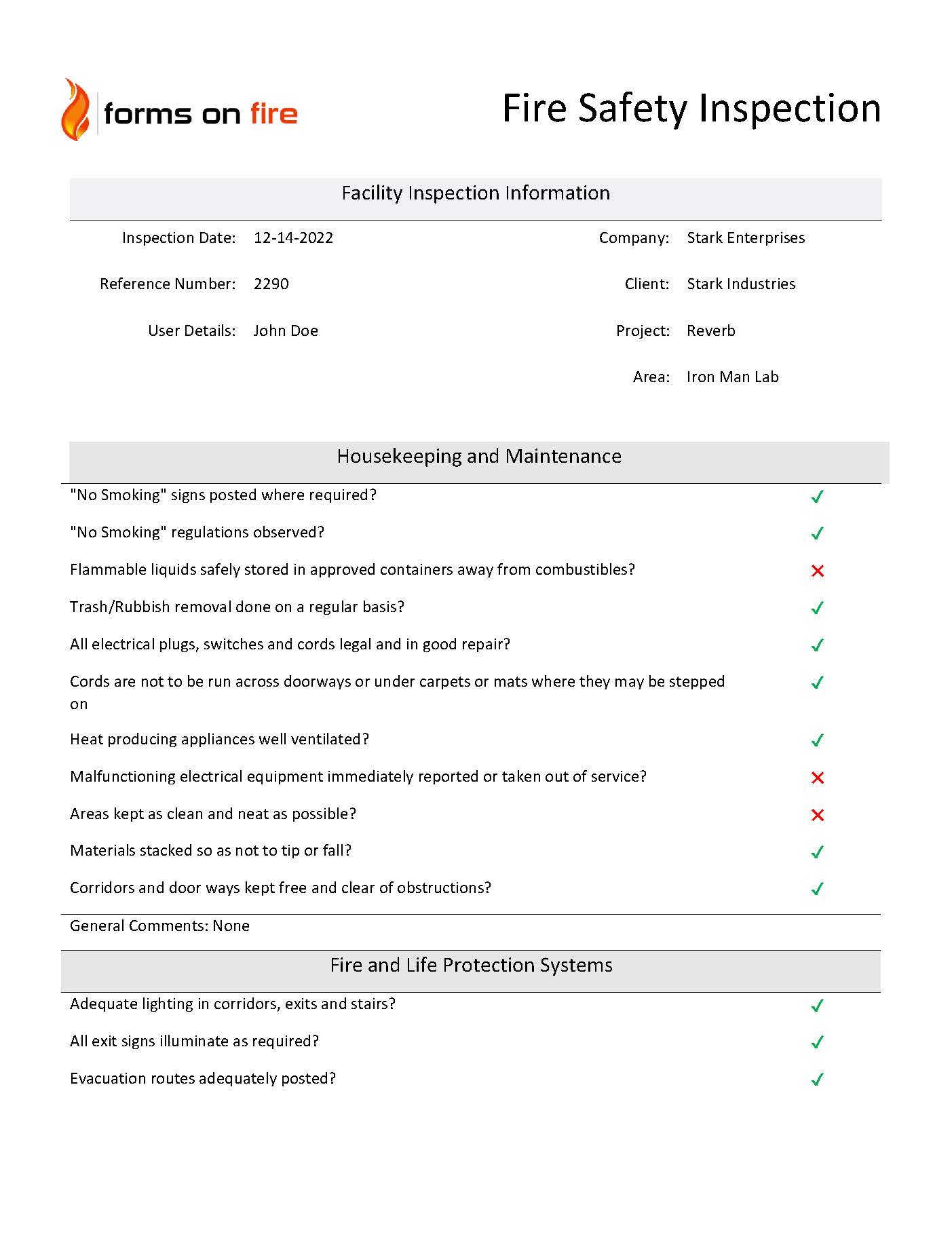
Where Do I Get a Fire Safety Inspection Checklist?
You can create your own fire safety inspection checklists with just word processing software and a printer. Keep in mind, though, that using an automated inspection tool like Forms On Fire makes the process simpler and more efficient.
Forms On Fire offers hundreds of form templates—including a fire safety checklist—that you can customize to your exact needs. You can then publish your checklist and distribute it to your team, who can complete and submit it while in the field using a smart device. Additionally, you can generate reports using information from the checklists. The entire automated process removes any need to keep track of hard copies, duplicate data-entry tasks, and manually submit and track information.

